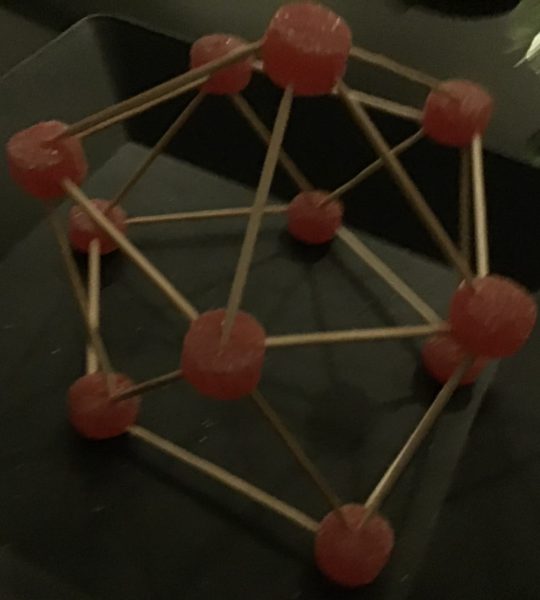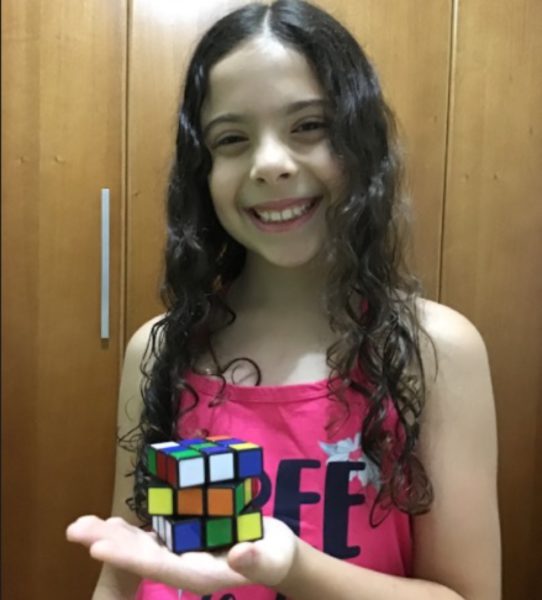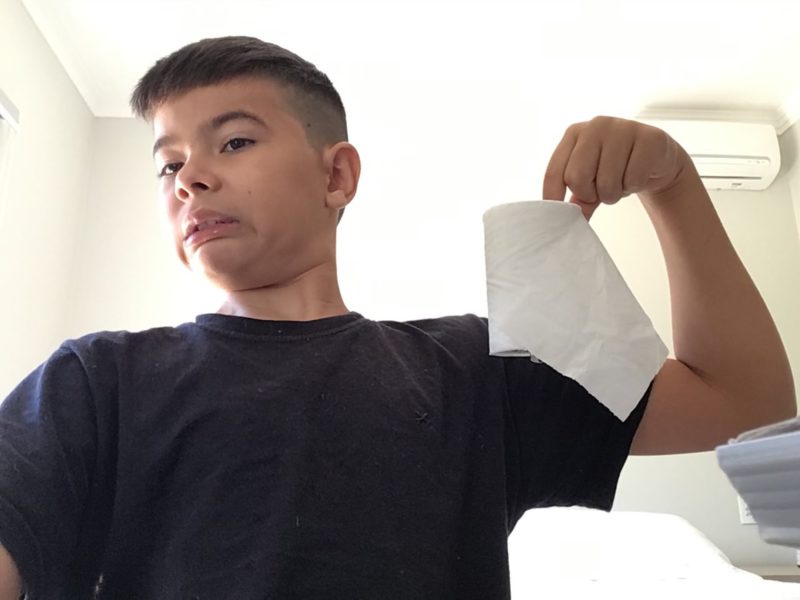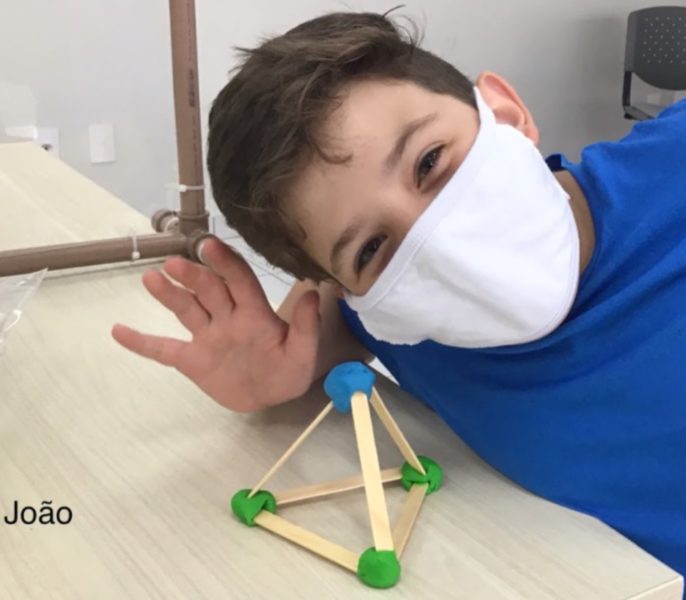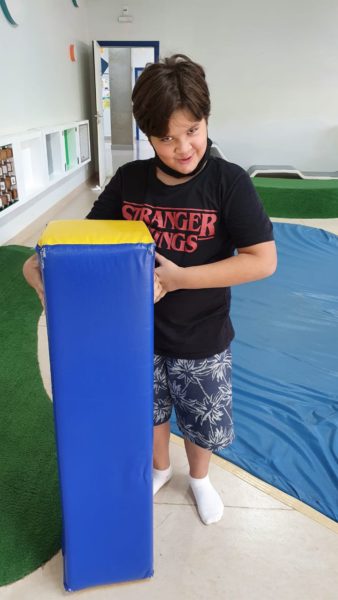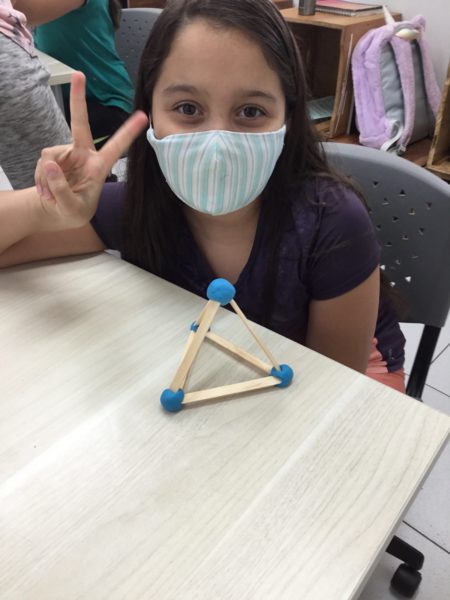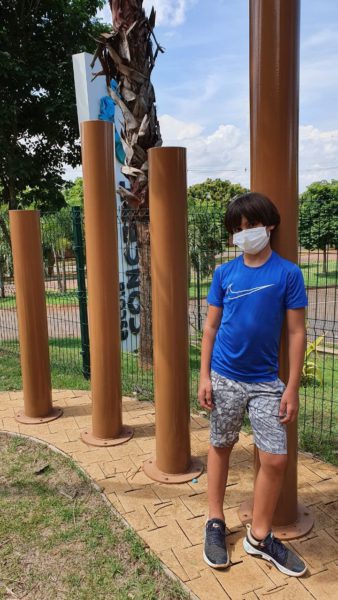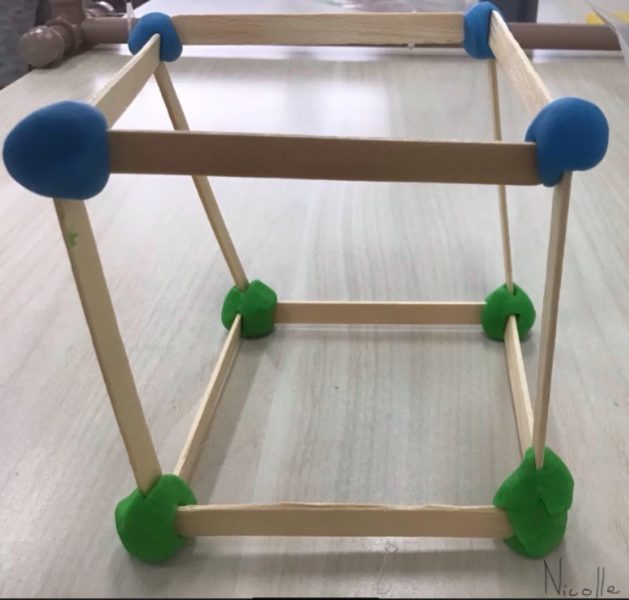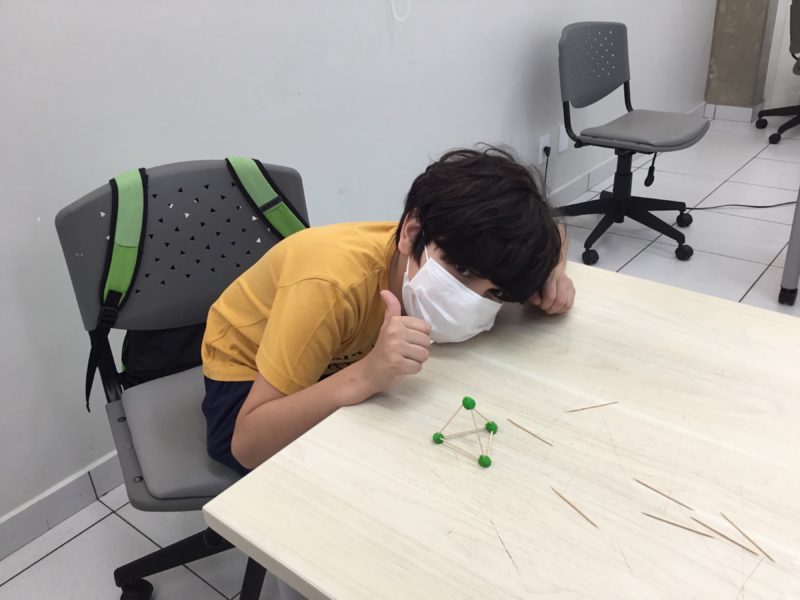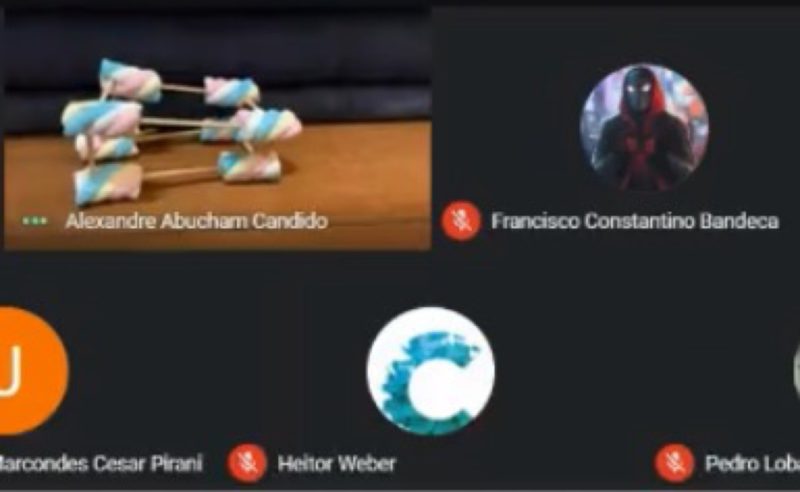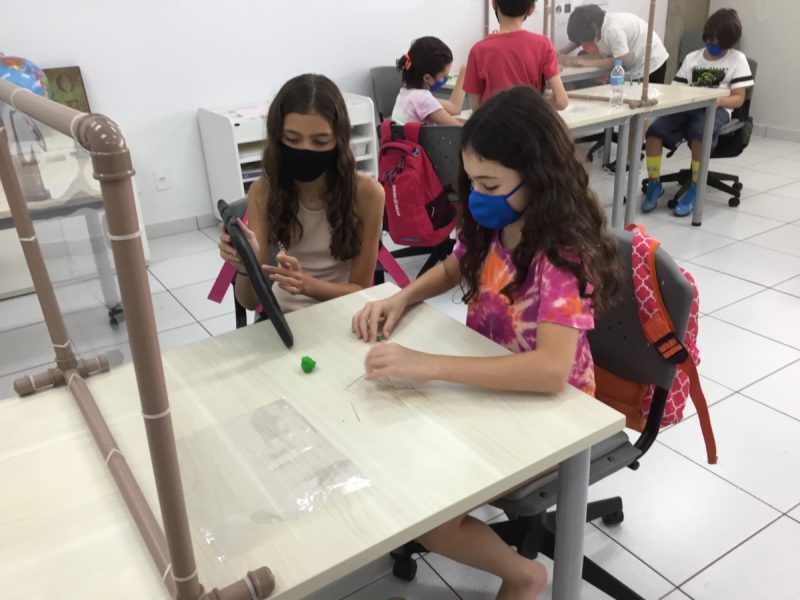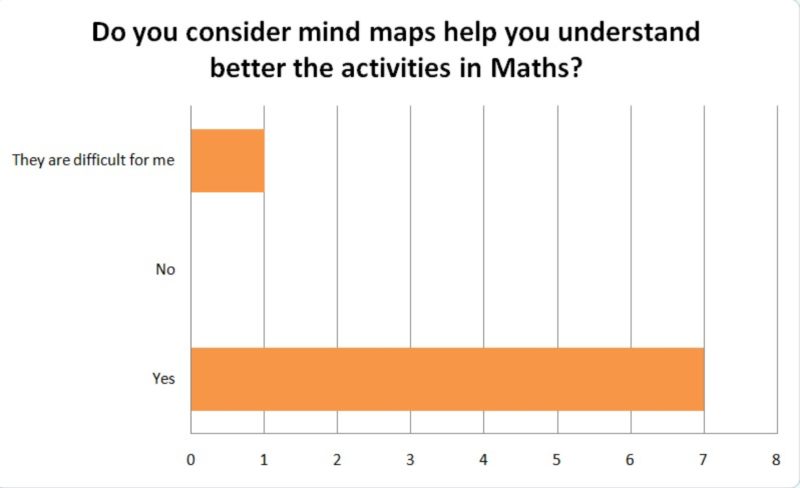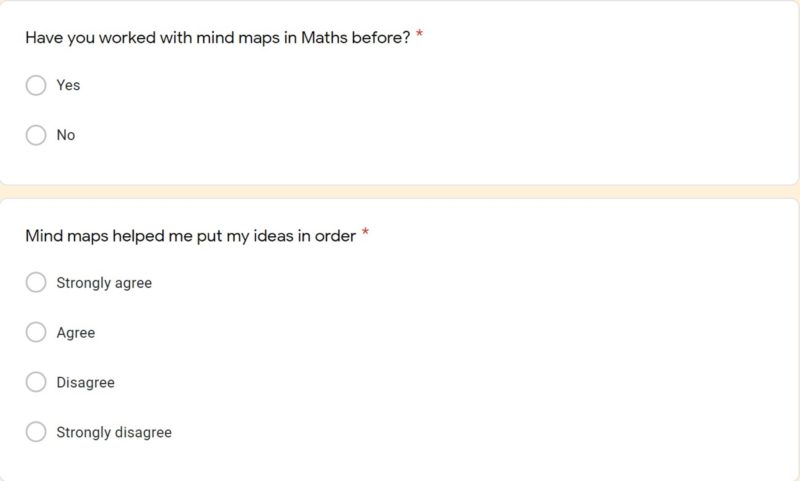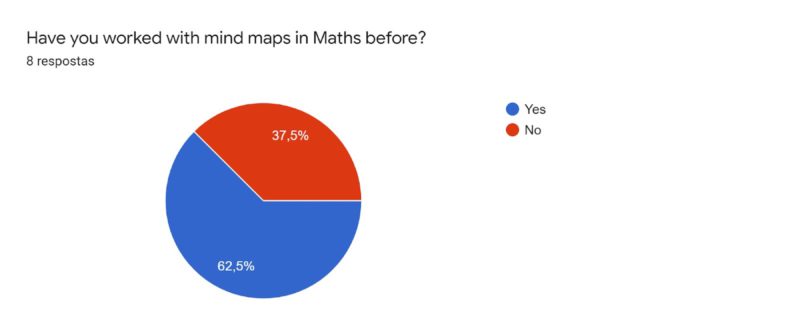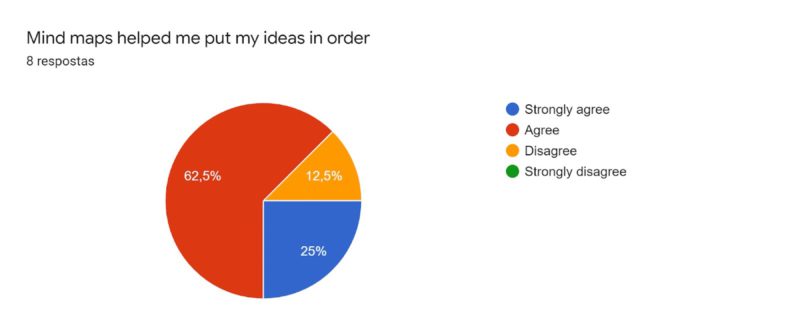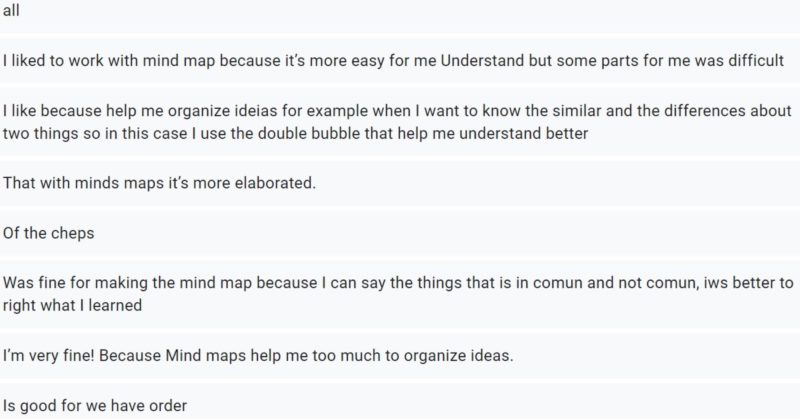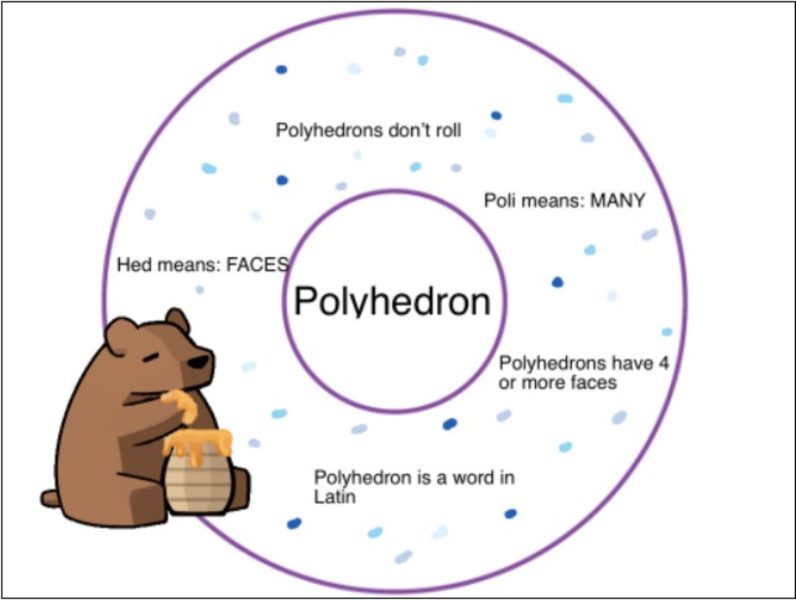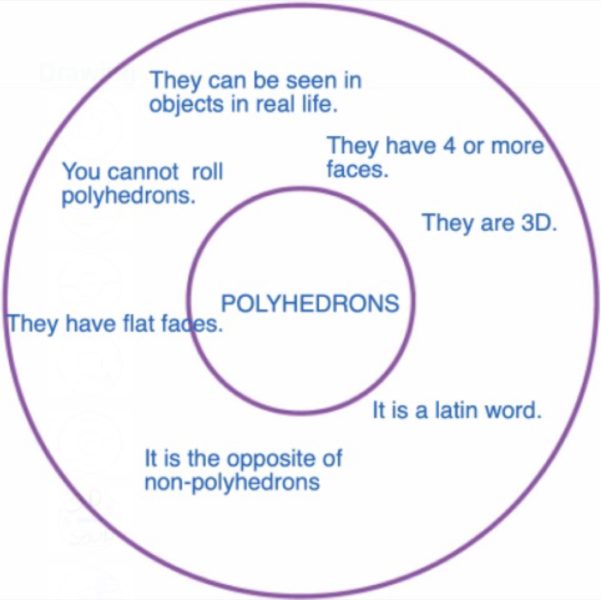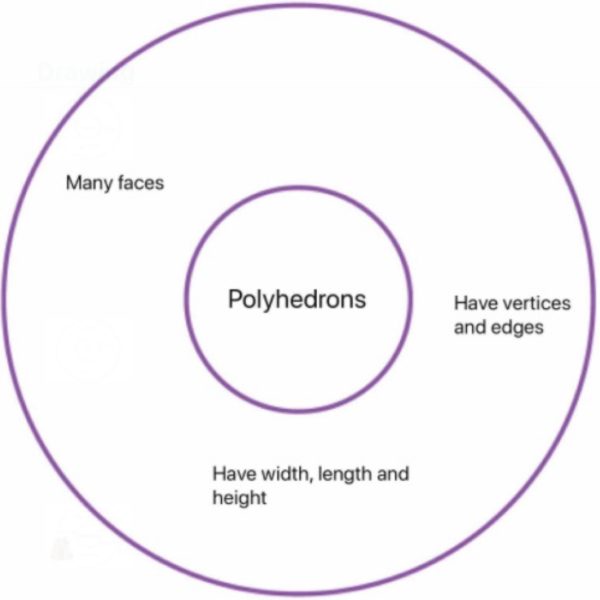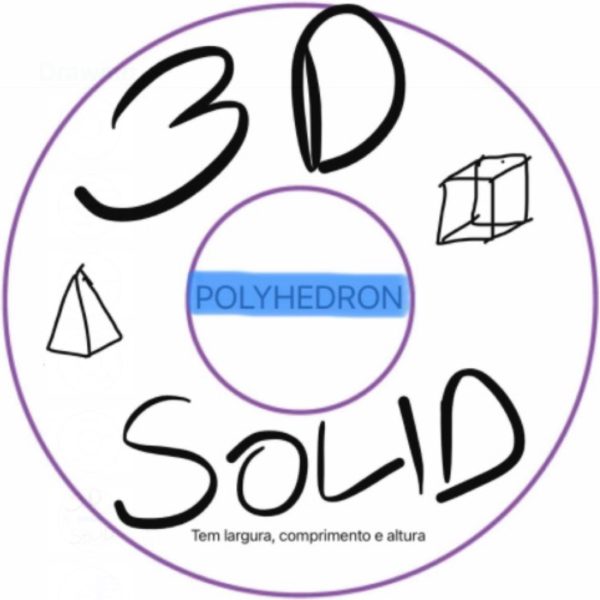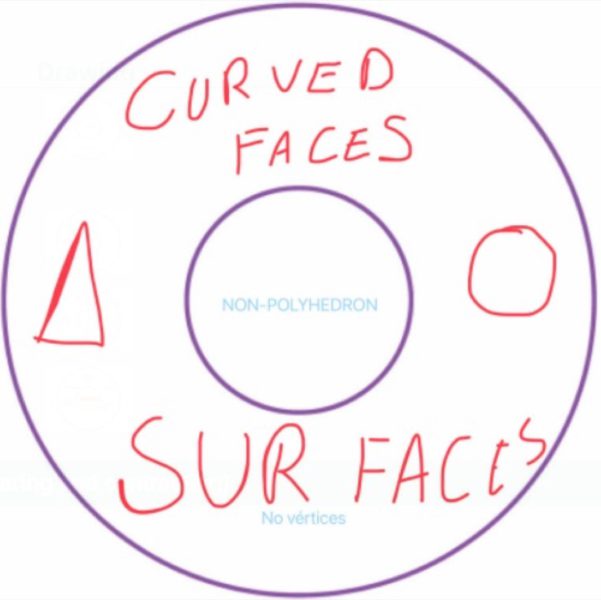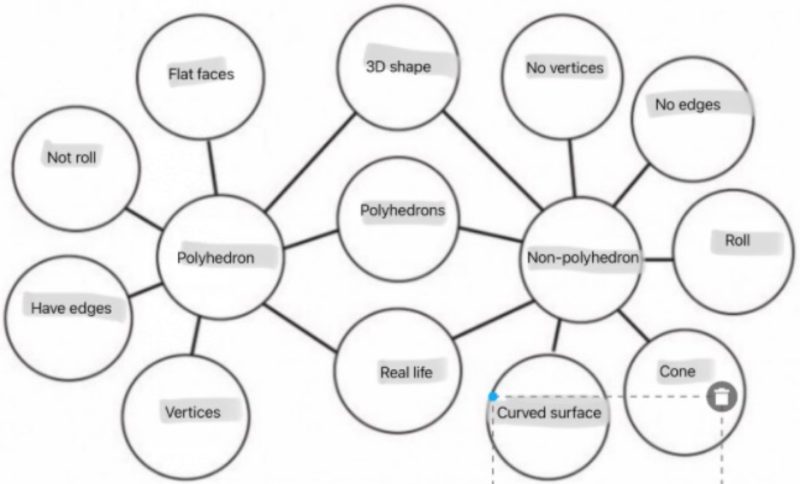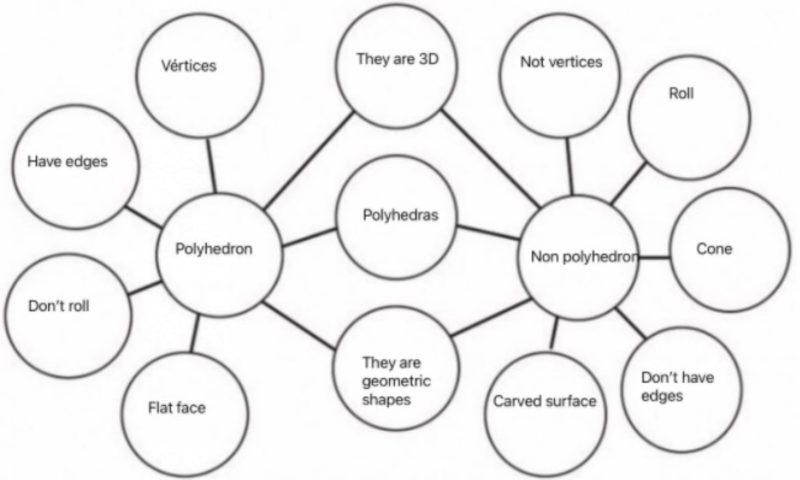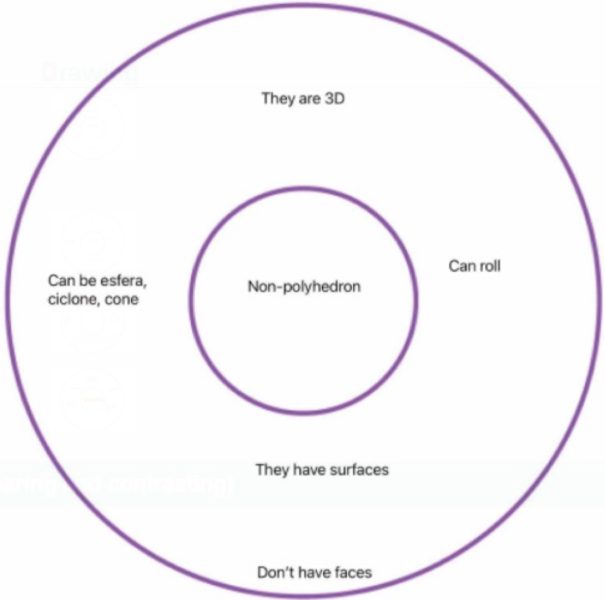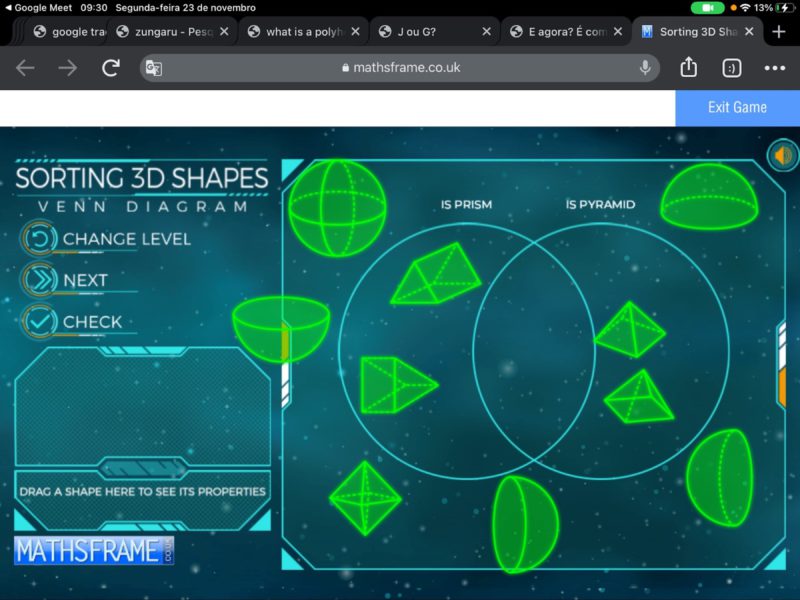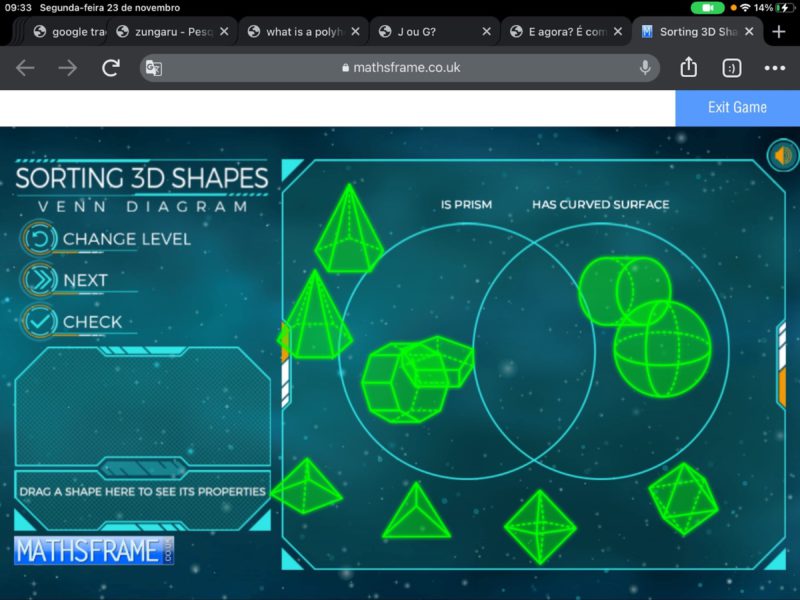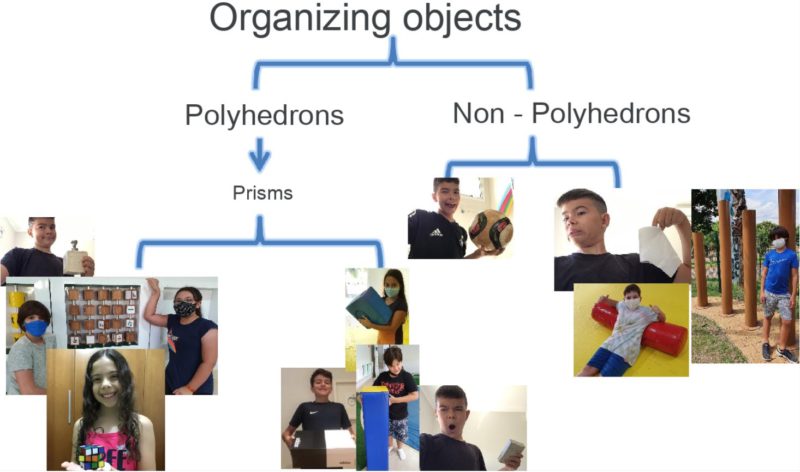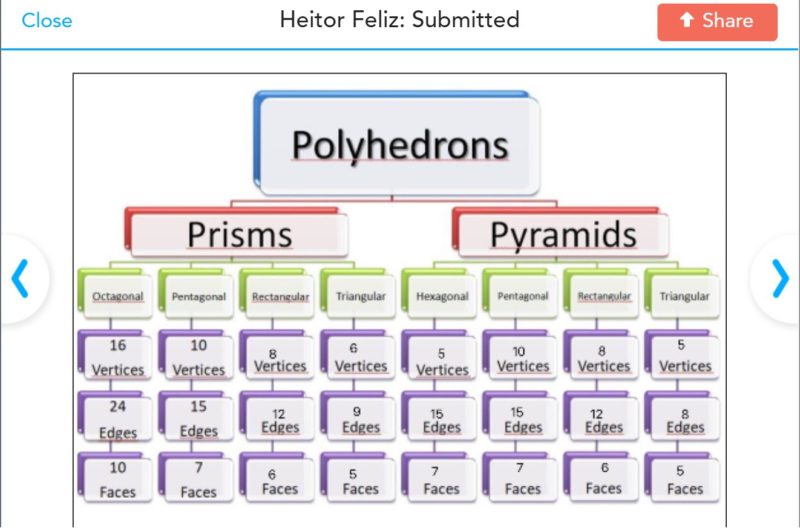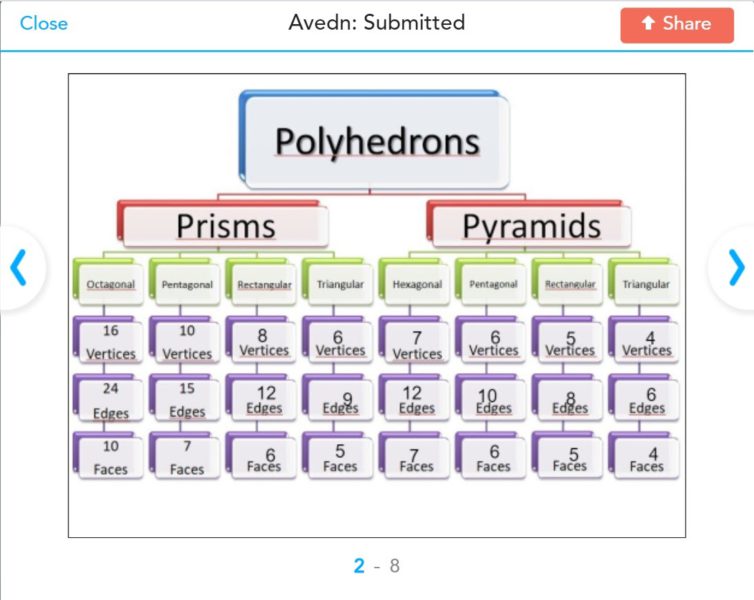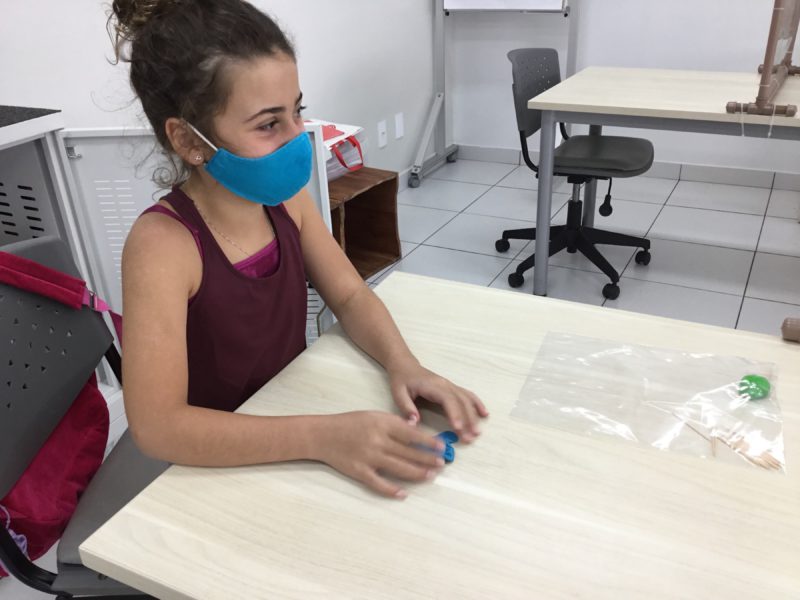Thinking maps for promoting spatial skills in Geometry through remote learning.
What is the impact of thinking maps for promoting spatial skills in geometry with 5th grade students?
General topic of interest
“the child first encounters the world and makes explorations to progressively create forms of representation of this world: images, drawings, verbal language”. -Smole (2003, p. 105) I am studying spatial skills (through the use of mind maps) for understanding students reasoning and accuracy. This year, it has been really challenging to guide students through remote classes. So, mind maps applied to our Geometry problems seemed like a great tool for making students’ understanding more clear and visible for me as a teacher when providing feedback. By the end my project I want to promote a higher level of spatial skills and engagement by having my students use mind maps to better organize their ideas. Spatial skills
1. Visual discrimination
2. Visual memory
3. Field decomposition
4. Conservation of shape and size
5. Visual motor coordination
6. Motion equivalence
Participants
The participants in this research study are fifth graders. 5A and 5B altogether. 26 students: 16 boys and and 10 girls
Data collecting approach
The students worked over five classes where they used mind maps to show their thoughts and validate their knowledge. Oral discussions after the implementation helped us understand how much they learned with the use of these tools. At the end of the process a questionnaire explored students for learning and perspective in relation to this work. This study is mainly qualitative.
Data collecting example
The students studied polyhedrons and non-polyhedrons along with their main characteristics by using three different types of mind maps: Circle map - Double - Bubble map - tree map and Venn diagram. (Samples of each were analyzed) These resources were also used at the moment of solving problems related to organization and grouping. Students went through experiences that are meaningful for them and focused on developing these spatial skills: visual discrimination, visual memory, field decomposition, conservation of shape and size, visual motor coordination and motion equivalence. The spatial skills learned in this activities aimed to help students better organize objects from contexts they are familiar with: home and school. Thus, this learning process can be used as a strategy for solving daily life problems they might face and also equip students with spatial skills.
Emerging results
By the end of the implementation of the activities some questions were asked to a sample group of students for checking their perspectives about the process of linking Geometry with mind maps. Students answered two closed and one open question. -Most of the students said mind maps helped them understand better geometry. -More than 60 percent of the students said they had already implemented mind maps in their Maths classes
-87,5 % of the answers show us that students agree with the idea that mind maps helped them organize their ideas better. -When hearing students free answers, the majority of them said they liked it and they used synonyms like “it was good, very good and fine”. This makes us think students are conscious that by doing these activities they reached their objectives when learning. Expanding on the same idea, they say mind maps help them organize and understand their ideas better. It seems it offers the students lots of opportunities for ideas organization. When comparing students answers with the production after each activity, it is noticeable they raise questions and discuss till the moment they can organize their ideas better and reflect them in simple activities like organizing objects at home or school by using geometry.
Reflections
After the implementation of the lessons I learned mind maps are really useful and adaptable to all kind of activities we want to teach. Students are familiar with the concepts and they themselves organize better their ideas when teachers have already reflected about the way of working on a specific topic. When we are really organized and our activities are purposeful even the students can predict what will come next on a topic. Mistakes and sharing information aloud also help students to organize their ideas and we can come up to unbelievable points as students did (4D and physics). Mind maps with a lot of questioning, coming not only from the teacher but the students, make pupils go deeper into the topics and clarify their ideas. Unconsciously, students identified that after going through mind maps use, they have a better sense of control, order and organization (taking into account students’ answers in the questionnaire). Mind maps along with continuous exercises, crafts, real life situations can create perfect environments for knowledge. Students enjoy the learning process and take away long-life skills and competences with them.
Next steps
At the very beginning I wanted to explore the role of oral discussions in 5th grade students in solving problem skills. I continue thinking this can be a potential area for researching about. I hope next year we have more time at school for getting a deeper view into this aspect. I think the profile of our students where we foster creativity and curiosity can be a good lab for us to study those solving problem skills mediated by students conversations and dialogues. I think our kids are very active thinkers that are always taking responsible risks; this last aspect can be influential for an environment where we are always developing projects and getting into the zone of proximal development. Mind maps of course prove to be a great resource for conductiong really complex studies and guide students thinking since it is made explicit with these thinking maps.

